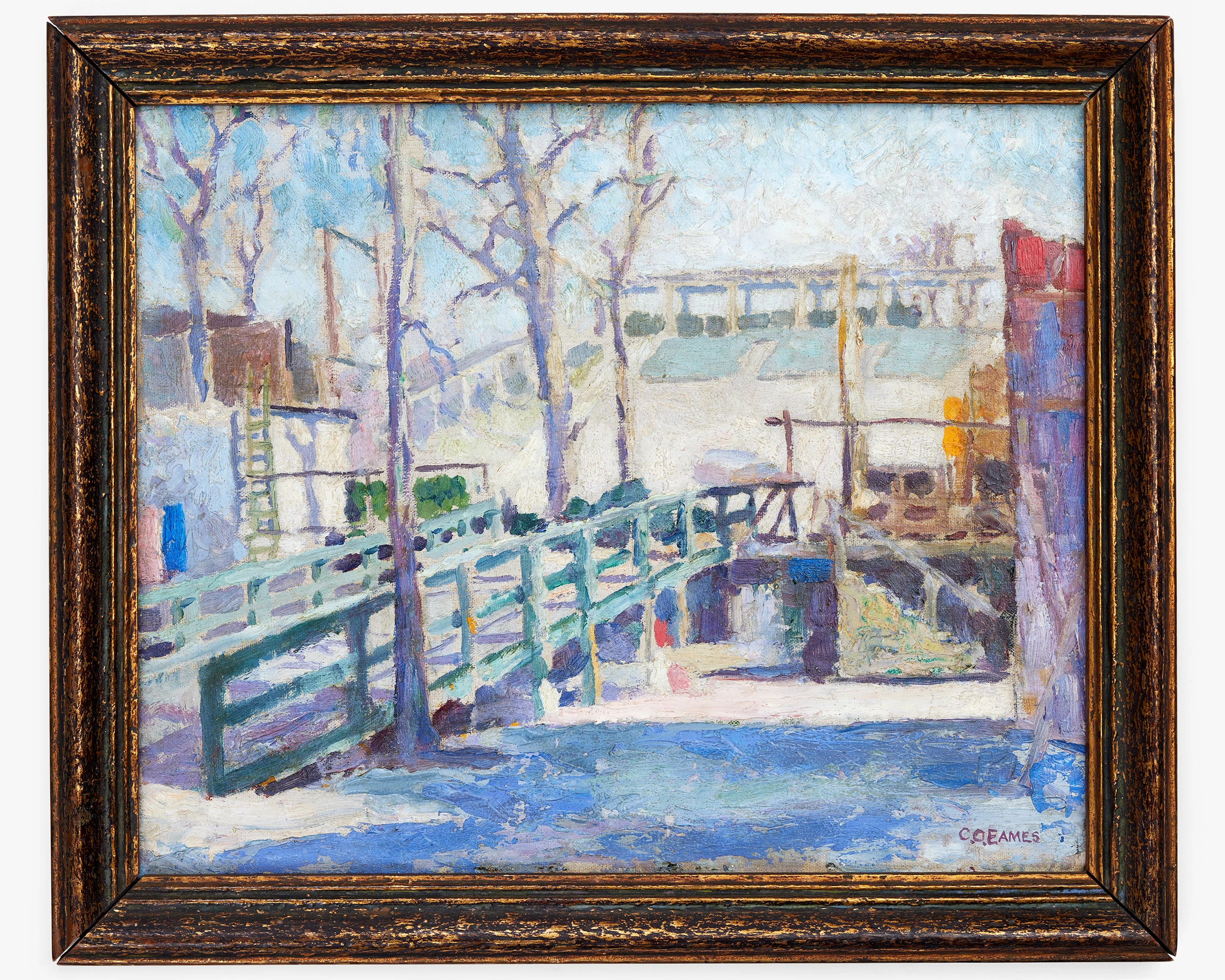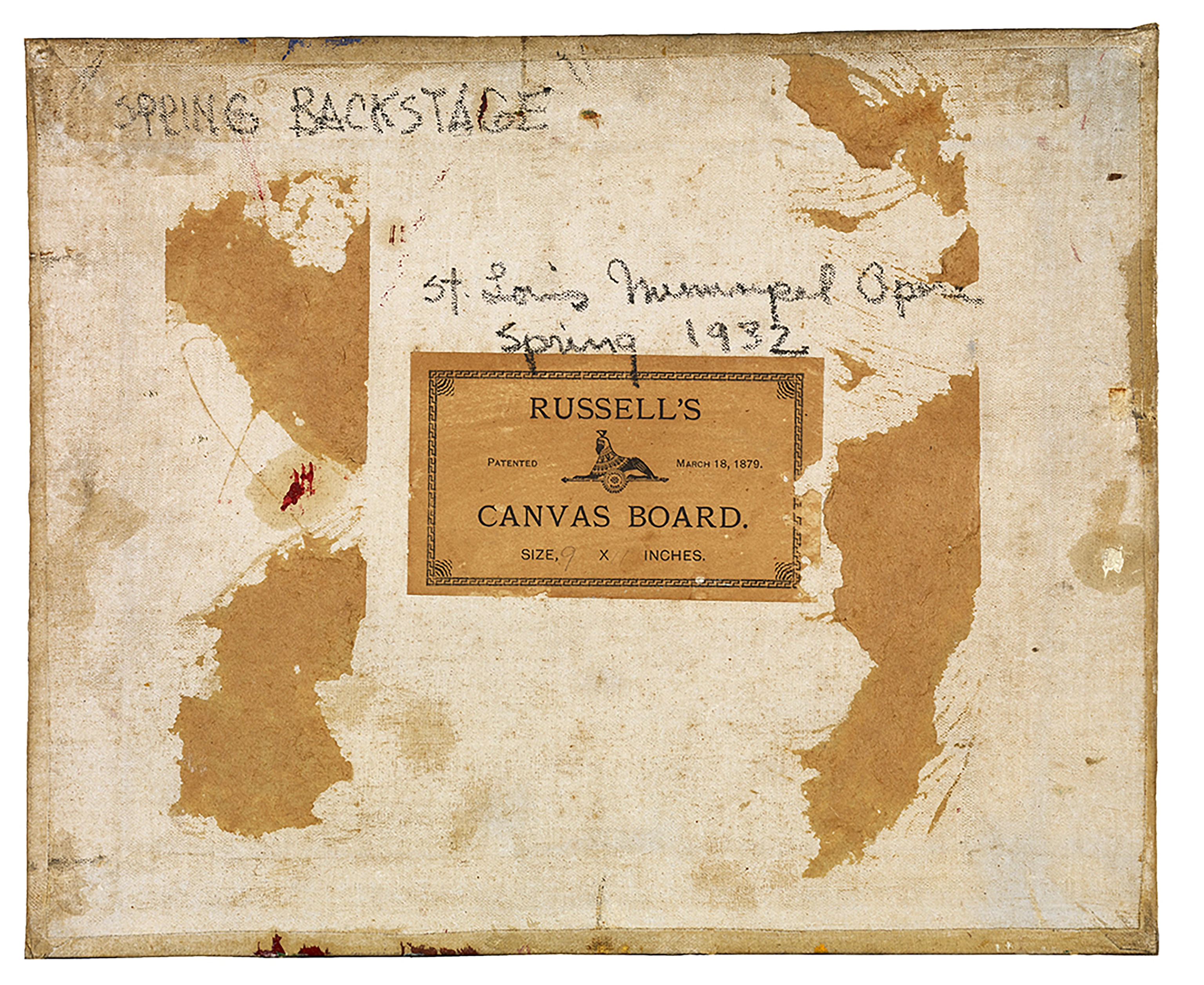
Spring Backstage (St. Louis Municipal Opera)
Even in his early years as a professional architect Charles took an expansive view of his role, and worked on diverse projects that went beyond the creation of buildings. Among these, his work for the St. Louis Municipal Opera involved the design and construction of stage sets for the outdoor theater widely known as the “the Muny.” In this painting, Charles chose to show the back of the stage. He includes the rolling staircase used by actors to climb onto and off of the stage, as well as a bigger access ramp. In the distance, Charles paints the arcade with columns that define the top of the amphitheater, where the public could watch performances at no cost. [The Muny remains in St. Louis’s Forest Park and continues to host performances with the majority of its seats made available for free.] Ten years after this painting, Charles would go on to work as a set designer for MGM (Metro-Goldwyn-Mayer) and became close companions with the film director Billy Wilder after Charles worked with him on The Spirit of St. Louis, a film about Charles Lindbergh. When Charles took photographs on this set and other Billy Wilder films, he often focused on the same features of a film set: all of the elements behind the camera, because Charles liked purposeful, functional design.
Obverse: Signed “C. O. Eames” in lower right. Reverse: “SPRING BACKSTAGE, St. Louis Municipal Opera, Spring 1932” handwritten above an attached label with a decorative border and “RUSSELL’S PATENTED [Image of Sphinx] MARCH 18, 1879. CANVAS BOARD. SIZE, 9 X 11 INCHES” printed in black ink.
- Artifact
- 2019.2.192
- Material
- Oil on canvas board
- Artist / Designer
- Charles Eames
- Art
- 9 × 11 in / 22.86 × 27.94 cm
- Date
- 1932
Charles’s lifelong interest in problem-solving is evident in his formative adult years, as he dabbled in just about every artistic medium. At Washington University (1925–1928) he received two first-place awards for the design of a bandstand and park pavilion. He also undertook printmaking, weaving, pottery, product design, and stage design as a member of the St. Louis Paint and Putter Club, which was both a social forum and a place of learning. Around 1932–1933, he designed sets for the St. Louis Municipal Opera outdoor theatre (still operating today in the city’s Forest Park). Characteristic of his natural curiosity as to how things work, Charles chose to paint the backstage area of the set in this small oil painting. The constructed back wall and stage brace of the set can be seen on the right. The central access ramp and rolling staircase is for the actors’ use, and in the distance, the columnar arcade that defines the top of the amphitheater is shown across the horizon line. Some ten years later, in Los Angeles during the early 1940s, Charles also worked as a set designer for the MGM (Metro-Goldwyn-Mayer) art department, and became close companions with film director Billy Wilder.
Rachael Blackburn Cozad

